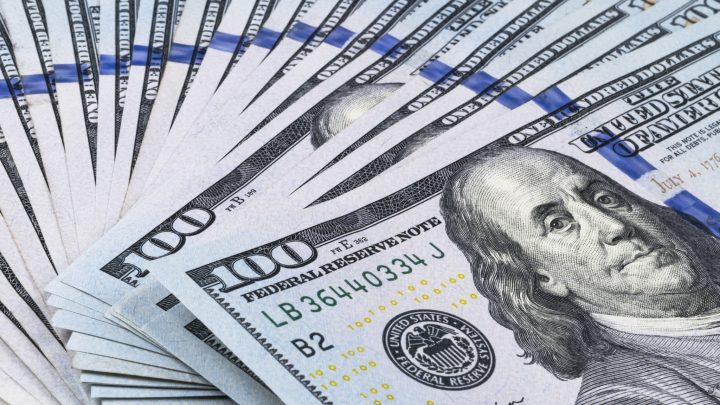Objective:
This is an initiative by BookMyForex to help our customers identify counterfeit notes by highlighting prominent security features of USD currency notes in order to provide a complete forex experience.
Introduction:
Knowing how you can spot fake USD currency notes can save you from getting into trouble with the law. While at the first glance even a fake dollar note may look similar to its legitimate counterpart, there are plenty of differences between the two that can be noticed easily, as long as you know how to spot differences between fake and real notes. There are several identifiers (indicators) in each Federal Reserve note and this article highlights all these significant identifiers which can help you identify genuine USD currency notes.
About USD:
The United States Dollar or USD is the official currency of the United States of America and all its territories. In 1944, the U. S. Dollar was designated as the currency of the world as a part of the Bretton Woods Agreement and to date, it holds its position as the world’s most powerful currency.
USD Sign and Value:
A total of 100 cents make up 1 USD. The U. S. Dollar is represented by the $ symbol or usually denoted as US$ so that it can be easily differentiated from other currencies that are dollar-based.
Know your forex currency notes – USD:
– 2004 style
The Federal Reserve notes of FRNs have distinct background colors with portrait images that are large and without a border.
– Portrait
The U. S Dollar bills of the 2004 style have large portraits that are placed off-center and do not have a border.
– Paper
The U. S. Dollar bill is made up of cotton and linen in a ratio of 3:1. Blue and red security fibers are also dispersed randomly throughout the currency paper.
Other Indicators:
1 – Watermark
All the U. S. Dollar currency notes have a watermark. This can be seen from either side of the note when held in front of bright light. See the below images A, B, C, D & E.
2 – Color-Shifting Ink
When you look at the $100, $50, $20 and $10 USD currency notes, you would notice the currency figure printed in a color-shifting ink which changes its color from copper to green when the currency note is tilted on either side at an angle of 45 degrees. The 100 USD currency note has an additional “Bell in the Inkwell” figure printed in this color-shifting ink. This color-shifting ink is not featured on the 5 USD currency note. See the below images A, B, C & D.
3 – Security Thread
You can see a clear embedded thread running vertically on all USD currency notes except $1 and $2. The currency note’s denomination can be seen inscribed on this thread which can be visible when held in front of a light source. Each of the USD currency notes will have uniquely placed threads and they all glow in a different color when held against UV light. See the below images A, B, C, D & E
4 – 3D Security Ribbon
You can see a blue-colored 3D security ribbon with 100s woven into the 100 USD currency note. These 100s along with the “Bell in the Inkwell” move side to side when you tilt the note up and down. When you move the note from one side to the other, they appear to move up and down. See the below image A.
5 – Serial Numbers
All USD currency notes of 1996 and later have serial numbers at the top left corner. The first letter of this serial number represents the series year. See the below images A, B, C, D & E
E = 2004, G = 2004A, I = 2006, J = 2009, L = 2009A
6 – Federal Reserve Indicators
You will notice that the 2004 style USD currency notes have a number and letter designation. Each of these is an indicator of the 12 different Federal Reserve Banks. You can see this number and letter designation at the left of the currency note, right below the serial number. The number printed here denotes the letter’s position in the alphabet and the letter is the same as the second letter in the serial number. See the below images A, B, C, D & E
7 – Note positions Letter and Number
The note position letter and number on USD currency notes denotes the position on the plate where the currency note was printed. You can see this on any of the corners of the note in the form of a letter and a number. See the below images A, B, C, D & E
8 – Face Plate Number
You can see the face plate number on the front of the note and his number indicates the printing plates used to print the front side of the note. See the below images A, B, C, D & E
9 – Series Year
The series year on the note represents the year in which a new currency note design got approved by the Secretary of the Treasury. It also signifies the year in which a new signature got incorporated into the note’s design with the appointment of a new Secretary of the Treasury. Whenever there is a significant change in the appearance of the note, you would notice a capital letter at the end of the series year. See the below images A, B, C, D & E
10 – Back Plate Number
You can see (Not shown in image) the back plate number on the back of the note at the bottom right corner and this number indicates the printing plates used to print the backside of the note
Image A: $100 Note
Image B: $50 Note
Image C: $20 Note
Image D: $10 Note
Image E: $5 Note
Table – 2004 Style USD Currency Notes Comparison
| Note | Background Color | Back of the Note | Watermark | Portrait | Security Thread (w.r.t. Portrait) | Color - Shifting Ink in Front Lower Right Numeral | Microprinting | Other Microprinting |
|---|---|---|---|---|---|---|---|---|
| 5 | Light purple and gray | Vignette of the Lincoln Memorial | Right: “5” Large_x000D_ Left: “5 5 5” Vertical | Lincoln | Right | No color-shifting ink | “USA” present between eagle’s shield_x000D_ “E Pluribus Unum” to the portrait’s right_x000D_ “FIVE DOLLARS” beside the borders on the side | “USA FIVE” at the back of the note, at the edge of purple 5 |
| 10 | Orange, red, and yellow | Vignette of the United States Treasury Building | Hamilton | Hamilton | Right | Copper to green | “THE UNITED STATES OF AMERICA” right below Hamilton’s portrait | “USA10” at the portrait’s left_x000D_ “TEN DOLLARS” at the side borders |
| 20 | Green and peach | Vignette of the White House | Jackson | Jackson | Left | Copper to green | “THE UNITED STATES OF AMERICA 20 USA” right below the Treasure’s signature | “USA20” at the initial portion of the text ribbon_x000D_ “USA TWENTY” at the portrait’s right |
| 50 | Blue and red | Vignette of the United States Capitol | Grant | Grant | Right | Copper to green | “THE UNITED STATES OF AMERICA” right beside Grant’s collar | “USA”, “50”, and “FIFTY” at the portrait’s left inside the blue stars_x000D_ “FIFTY” at the side borders |
| 100 | Blue | Vignette of Independence Hall | Franklin | Franklin | Left | Copper to green_x000D_ Also visible in “Bell in the Inkwell” | “THE UNITED STATES OF AMERICA” right beside Franklin’s collar_x000D_ “100” in the vertical border of the note_x000D_ “USA” right below Franklin’s portrait | “ONE HUNDRED USA” at golden quill’s side_x000D_ “USA 100” beside the watermark of Franklin’s portrait |
In case you come across any counterfeit currency while availing our services, you can share your order number and pictures at care@bookmyforex.com and we will get back to you at the earliest.
Source: Secretservice.gov


































Leave a Reply